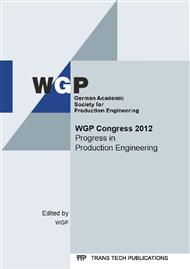p.181
p.197
p.213
p.225
p.241
p.253
p.265
p.277
p.291
Development of a Manufacturing Process of Temporal Bone Surgery Models Using Rapid Prototyping
Abstract:
Cochlear implant surgery on highly hearing impaired and deaf patients presents surgeons with major medical challenges. In advance of the operation, the surgeon must gain the necessary dexterity and topographical knowledge in the field of microsurgery. For these purposes human cadaver specimens are usually used but they are not sufficiently available. Therefore, our group from the University of Magdeburg researches and develops a manufacturing process for producing individual anatomical facsimile models (AFM) of the human ear bone, which originally simulate the cavity structure of the inner ear (cochlea, semicircular canals) by using rapid prototyping methods. For this production a variety of biomechanical data of the human ear bone are needed to recreate the later models with the same biomechanical properties. By using these obtained biomechanical data and the individual patient's CT data, stereolithography models of UV-sensitive epoxy resin can be produced. The models can be emulated to the biomechanical properties of the human bone by varying the curing process of the epoxy resin. Thus, the authentic drilling and milling properties give the surgeon the possibility to develop the skills needed in dealing with microsurgical instruments. At the same time the authenticity of the AFM promotes the study of the anatomical structure and the orientation of anatomical landmarks.
Info:
Periodical:
Pages:
241-252
Citation:
Online since:
April 2014
Keywords:
Price:
Сopyright:
© 2014 Trans Tech Publications Ltd. All Rights Reserved
Share:
Citation:


